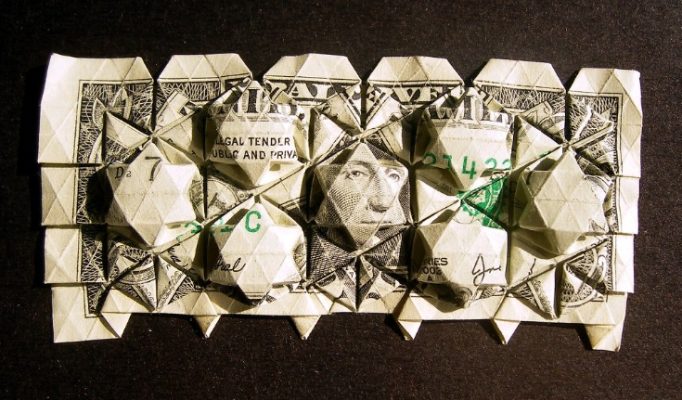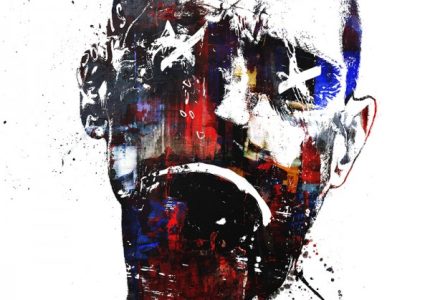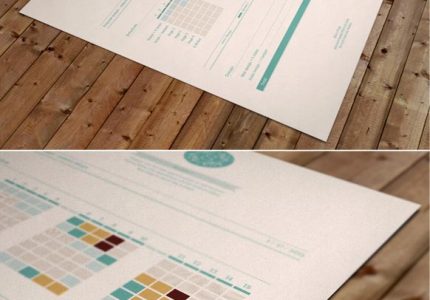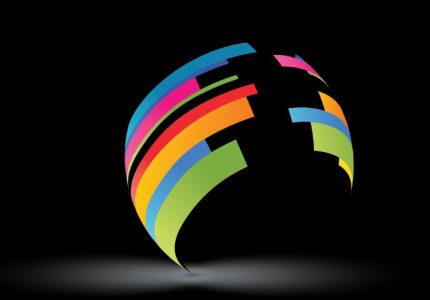Overview of 3D Graphic Design
3D graphic design is a dynamic and innovative field that combines artistry and technology to create three-dimensional visual representations. It involves the use of specialized software to craft realistic models, animations, and visual effects that bring ideas to life in a virtual space. As a vital component of modern visual communication, 3D graphic design is widely employed in industries such as entertainment, advertising, architecture, and gaming, offering limitless possibilities for creativity and expression.
Definition and Scope
3D graphic design is a creative process involving the creation of three-dimensional visual content used across various digital and print media. It combines elements of art, technology, and programming to produce realistic and immersive visuals that can be viewed from multiple angles. The scope of 3D graphic design encompasses industries such as entertainment, advertising, architecture, gaming, and product visualization.
Historical Development
3D graphic design is a creative process that involves creating three-dimensional visual representations using specialized software. It allows designers to produce realistic models, animations, and visual effects that enhance digital media, advertising, gaming, and film production.
Historically, 3D graphic design has evolved significantly since its inception. It began in the 1960s with basic wireframe models and simple rendering techniques. During the 1980s and 1990s, advancements in computer technology led to the development of more sophisticated software and rendering capabilities. The introduction of software like Autodesk 3ds Max, Maya, and Blender revolutionized the industry. Over the years, improvements in GPU speed, real-time rendering, and increased accessibility of tools have made 3D design more popular and widely used across various fields.
- Initial Developments in the 1960s: Beginnings of wireframe and basic modeling techniques.
- Growth in the 1980s and 1990s: Introduction of more complex software and realistic rendering.
- Technological Advancements: Enhanced GPU capabilities and real-time rendering in the 2000s and beyond.
- Modern Usage: Integration into gaming, virtual reality, medical imaging, and cinematic visual effects.
Key Applications
3D graphic design involves creating three-dimensional visual content using specialized software to produce realistic and immersive images, animations, and models. It combines art and technology to bring concepts to life in a virtual space, providing depth, texture, and dynamic perspectives that are unattainable with traditional 2D design.
Key applications of 3D graphic design include entertainment, such as video games, movies, and virtual reality experiences, where realistic characters and environments are essential. It is also widely used in architecture and interior design to create detailed visualizations of buildings and spaces before construction. Additionally, 3D design plays a crucial role in product design and manufacturing, allowing for prototypes and visual representations to be developed and tested digitally. Marketing and advertising also leverage 3D graphics to produce engaging visual content that captures audience attention.
Tools and Software for 3D Graphic Design
Tools and software for 3D graphic design have revolutionized the way artists and designers create visual content, enabling the development of highly detailed and realistic digital models. These innovative applications provide a wide range of features, from modeling and texturing to rendering and animation, making them essential for professionals in various industries such as gaming, film, architecture, and advertising. Staying updated with the latest software options can significantly enhance creativity and productivity in 3D graphic design projects.
Popular 3D Modeling Software
Tools and software for 3D graphic design are essential for creating detailed and realistic three-dimensional models. These programs enable artists and designers to bring their ideas to life through complex modeling, texturing, and rendering processes.
Popular 3D modeling software includes Blender, which is an open-source and highly versatile tool suitable for modeling, animation, and rendering. Autodesk Maya is another widely used application known for its robust features, especially in film and game development. 3ds Max, also from Autodesk, offers powerful modeling and rendering capabilities, commonly used in architectural visualization and character design. Cinema 4D is favored for its user-friendly interface and strong motion graphics features. ZBrush specializes in high-resolution sculpting, allowing artists to create highly detailed models. Additionally, SketchUp is preferred for more straightforward architectural design projects. These tools provide a wide range of options catering to different levels of expertise and specific project needs in the field of 3D graphic design.
Rendering Engines
Tools and software for 3D graphic design and rendering engines are essential components in creating realistic and visually appealing 3D models and scenes. Popular 3D design software includes Blender, Autodesk Maya, 3ds Max, Cinema 4D, and SketchUp, each offering diverse features for modeling, animation, and visualization. Rendering engines such as Arnold, V-Ray, KeyShot, and Cycles transform the designed models into high-quality images by simulating light and material interactions. These tools enable graphic designers to produce detailed textures, accurate lighting, and lifelike scenes, enhancing the overall quality of their projects in various industries including entertainment, architecture, and product design. Additionally, real-time rendering engines like Unreal Engine and Unity are increasingly used for interactive visualizations and virtual reality experiences, pushing the boundaries of creative possibilities in 3D graphic design.
Animation and Simulation Tools
Tools and software for 3D graphic design, animation, and simulation are essential resources for artists, designers, and developers aiming to create realistic and dynamic digital visuals. These tools enable the creation, editing, and rendering of complex 3D models and scenes, facilitating the development of detailed animations and simulations. Popular 3D graphic design software often includes features such as sculpting, texturing, rigging, and lighting, which are crucial for producing professional-quality outputs. Animation tools in this domain help bring static models to life through keyframing, motion capture, and physics-based simulations, enhancing storytelling and visual impact. Additionally, simulation tools allow for realistic rendering of physical phenomena such as fluid dynamics, particle effects, and environmental interactions, adding depth and realism to projects. Innovative software solutions continuously evolve to incorporate user-friendly interfaces, powerful rendering engines, and integrated workflows that optimize productivity and creative possibilities in the field of 3D graphic design. Whether working on video game assets, cinematic effects, or architectural visualizations, these tools are the backbone of modern digital artistry.
Post-Processing and Compositing Tools
Tools and software for 3D graphic design, post-processing, and compositing are essential for creating professional and visually compelling 3D visuals. These tools facilitate modeling, rendering, texturing, and final image adjustments, streamlining the workflow for artists and designers.
- Blender: An open-source 3D creation suite supporting modeling, sculpting, rendering, compositing, and animation.
- Autodesk Maya: Industry-standard software known for 3D modeling, animation, visual effects, and rendering capabilities.
- Cinema 4D: Renowned for its user-friendly interface, motion graphics, modeling, and rendering features.
- 3ds Max: Popular for architectural visualization, modeling, and rendering in 3D design projects.
- ZBrush: Specialized in high-poly modeling and detailed texturing for character and asset creation.
- Adobe After Effects: Widely used for post-processing, compositing, and adding visual effects to 3D renders.
- Nuke: A high-end compositing software used for complex visual effects and integrating 3D elements seamlessly.
- Substance Painter: Essential for texturing and material creation, providing realistic surface details for 3D models.
- Photoshop: Often used for post-processing, texture editing, and refining images created from 3D renders.
Fundamental Techniques in 3D Design
Fundamental techniques in 3D design form the foundation for creating compelling and realistic digital graphics. In the realm of graphic design, mastering these methods enables artists to bring ideas to life through three-dimensional visualization. From modeling and texturing to lighting and rendering, understanding these core principles is essential for producing visually stunning and effective 3D graphics.
Modeling Techniques
Fundamental techniques in 3D design are essential for creating realistic and visually compelling models in graphic design. These include understanding shape, form, and proportion to build accurate and aesthetically pleasing objects. Modeling techniques such as polygonal modeling, NURBS, and sculpting enable designers to craft detailed and complex models with precision. Polygonal modeling involves manipulating vertices, edges, and faces to shape objects, while NURBS focus on smooth, mathematically defined curves ideal for organic forms. Sculpting techniques, inspired by traditional clay modeling, allow for high-resolution details and intricate surface textures. Mastering these methods provides a solid foundation for producing professional 3D graphics used in advertising, gaming, and multimedia projects.
Texturing and Materials
Fundamental techniques in 3D design, texturing, and materials are essential for creating realistic and compelling digital graphics. In 3D design, understanding spatial relationships and mastering modeling tools allows artists to craft intricate models with precision. Texturing involves applying colors, patterns, and surface details to enhance the visual appeal and realism of 3D objects. Materials define the physical properties of surfaces, such as reflectivity, transparency, and roughness, dictating how light interacts with them. Combining these techniques effectively results in more immersive and visually stunning graphic designs, enabling artists to bring their creative visions to life in the digital realm.
Lighting and Rendering
Fundamental techniques in 3D design, lighting, and rendering are essential skills for creating realistic and visually compelling graphic designs. Mastering these skills allows designers to craft immersive environments and objects that communicate effectively and captivate viewers. In 3D design, understanding modeling, texturing, and detailing is crucial to bring concepts to life with accuracy and creativity.
Lighting plays a vital role in setting the mood and emphasizing the form and texture of 3D models. Techniques such as three-point lighting, HDRI imaging, and volumetric lighting help achieve depth and realism. Proper lighting choices enhance the visual narrative and create a sense of space within the scene.
Rendering involves converting the 3D scene into a final image or animation, often requiring knowledge of materials, shading, and camera settings. Advanced rendering techniques like ray tracing, global illumination, and ambient occlusion produce highly realistic results by simulating real-world light behavior. Overall, proficiency in these fundamental techniques ensures the creation of high-quality graphic designs in 3D.
Animation Fundamentals
Fundamental techniques in 3D design and animation are essential for creating realistic and engaging graphic content. Mastering these basics allows designers to bring their ideas to life in three-dimensional space, enhancing visual storytelling and user experience.
- Understanding 3D Modeling: Learning to create and manipulate geometric shapes forms the foundation of 3D design. Tools like extrude, carve, and scale help in developing complex structures.
- Proficiency in Texturing and Materials: Applying textures and assigning materials gives depth and realism to objects, making them visually convincing in the digital environment.
- Lighting and Rendering: Proper lighting techniques highlight the features of a model, while rendering transforms the scene into a polished, final image or animation.
- Animation Principles: Fundamental concepts like timing, spacing, and anticipation are crucial for creating believable movement and interactions within a scene.
- Camera Work and Composition: Effective camera positioning and framing guides viewer focus and enhances the overall aesthetic of a design or animation.
- Rigging and Skinning: For character animation, rigging adds an internal skeleton, and skinning binds the mesh to the rig, enabling expressive and natural movements.
Creative Processes in 3D Design
Creative processes in 3D design are essential for transforming innovative ideas into visually compelling digital artworks. In graphic design, 3D techniques enable artists to craft realistic models, dynamic visuals, and immersive experiences that elevate their creative expressions. Exploring these processes reveals the step-by-step workflows and inventive strategies behind producing stunning graphic design projects in three dimensions.
Concept Development
Creative processes in 3D design for graphic arts involve a series of innovative steps that transform initial ideas into visually compelling three-dimensional concepts. Concept development is a crucial phase where designers brainstorm, sketch, and refine their vision to ensure the final product aligns with the intended message and aesthetic. This process encourages experimentation with forms, materials, and lighting to create a cohesive and engaging design.
- Ideation and Brainstorming: Generating a wide range of ideas through sketches and notes.
- Research and Inspiration: Gathering references to inform design choices and ensure originality.
- Concept Sketching: Creating preliminary 2D sketches to visualize different options.
- Modeling and Prototyping: Developing initial 3D models using software like Blender or Maya.
- Iterative Refinement: Continuously improving the models based on feedback and personal critique.
- Material and Texture Exploration: Applying various surfaces to enhance realism or artistic style.
- Lighting and Rendering: Setting up lighting conditions to highlight features and achieve desired mood.
- Finalization and Presentation: Preparing the 3D design for rendering, presentation, or production.
Storyboarding and Planning
Creative processes in 3D design, storyboarding, and planning are fundamental components of graphic design, enabling artists to transform abstract ideas into tangible visual narratives. In 3D design, the process begins with conceptualization and sketching, where designers explore shapes, structures, and aesthetics before moving into digital modeling. This phase requires a combination of creativity and technical skill to establish a strong foundation for the final piece. Storyboarding is equally essential, as it helps visualize sequences, camera angles, and scene flow, providing clarity and direction for the production process. Planning involves detailed scheduling, resource allocation, and setting milestones to ensure a smooth workflow. Effective integration of these processes allows graphic designers to produce compelling, coherent, and innovative 3D visualizations that captivate audiences and communicate ideas effectively.
Iterative Design and Feedback
Creative processes in 3D graphic design involve a dynamic cycle of idea development, experimentation, and refinement to produce visually compelling models and visuals. This process encourages designers to explore various concepts, materials, and techniques to achieve innovative results.
Iterative design plays a crucial role in 3D graphic design by allowing continuous improvement through repeated cycles of creation, testing, and modification. Each iteration helps identify strengths and weaknesses, leading to more polished and effective final products.
Feedback serves as an essential component in this creative journey, providing valuable insights from peers, clients, or target audiences. Constructive critique helps designers refine their work, ensuring the final 3D visuals align with project goals and aesthetic standards.
Application Areas of 3D Graphic Design
3D graphic design plays a vital role across a wide range of industries, offering innovative solutions and visually compelling content. Its application areas include entertainment, such as video games and movies, where realistic characters and environments are created. Additionally, it is extensively used in product design and advertising to showcase prototypes and promotional visuals.Architectural visualization also benefits greatly from 3D graphics, enabling detailed and accurate representations of buildings before construction. Overall, 3D graphic design enhances creativity and communication in many fields, making it an essential tool in modern visual media.
Entertainment Industry (Games, Films, VR)
Application areas of 3D graphic design in the entertainment industry encompass a wide range of creative and technical fields. In the realm of video games, 3D design is essential for creating realistic characters, immersive environments, and dynamic animations that enhance user experience. Films benefit from 3D graphics through visual effects, animated characters, and intricate set designs, bringing stories to life with stunning visual fidelity. Virtual reality (VR) leverages 3D graphics to craft fully immersive experiences, allowing users to explore virtual worlds with a sense of presence and interaction that mimics real life. Overall, 3D graphic design plays a vital role in shaping engaging, visually rich content across these entertainment sectors.
Advertising and Marketing
Application areas of 3D graphic design in advertising and marketing have expanded significantly, offering innovative ways to attract and engage audiences. With the use of 3D graphics, brands can create realistic product visualizations, immersive commercials, and interactive experiences that enhance customer engagement. In advertising, 3D design is used to develop eye-catching visuals, virtual prototypes, and augmented reality campaigns which help to showcase products more effectively. Marketing strategies also benefit from 3D graphic design by allowing businesses to produce compelling presentations, virtual tours, and customized content that stand out in a competitive marketplace. Overall, the integration of 3D graphic design into advertising and marketing enables brands to communicate their messages more vividly and persuasively, ultimately driving sales and brand awareness.
Architecture and Interior Design
3D graphic design plays a crucial role in various application areas, enhancing creativity and visualization capabilities across multiple industries. In architecture, 3D graphic design is used to create detailed and realistic models of buildings and landscapes, allowing architects and clients to visualize projects before construction begins. This technology improves planning, design accuracy, and helps in making informed decisions. In interior design, 3D graphics enable designers to produce immersive and accurate visualizations of interior spaces, facilitating better communication with clients and seamless modifications. Additionally, 3D graphic design is extensively employed in product design, animation, virtual reality experiences, and marketing campaigns, demonstrating its versatility and vital importance in modern visual communication and creative development. Overall, 3D graphic design enhances clarity, efficiency, and innovation in these fields, driving progress and better outcomes.
Product Design and Prototyping
3D graphic design, product design, and prototyping play a vital role across various industries by enhancing visualization, innovation, and development processes. These applications enable professionals to create detailed models, test concepts, and communicate ideas effectively before production or implementation. The use of 3D techniques in graphic design revolutionizes the way designers and engineers approach project development.
- Enhancing Visual Communication: 3D graphic design helps create realistic renderings and animations that improve client presentations and marketing materials.
- Product Development: It allows designers to conceptualize and refine products digitally, reducing the time and cost associated with physical prototypes.
- Prototyping: Rapid prototyping using 3D modeling accelerates the process of testing and iterating product ideas, ensuring better functionality and aesthetics.
- Architectural Visualization: 3D graphics provide detailed visual representations of buildings and structures, aiding architects and clients in understanding design concepts.
- Game and Entertainment Design: Utilized extensively in creating immersive environments, characters, and effects for video games and virtual reality experiences.
- Medical and Scientific Visualization: Assists in creating accurate models of organs, molecules, and other complex structures for education and research.
Trends and Innovations
In the rapidly evolving world of graphic design, especially within the realm of 3D, emerging trends and innovative techniques are transforming the way visual content is created and experienced. From cutting-edge software developments to new aesthetic approaches, staying abreast of these changes is crucial for designers aiming to push creative boundaries and deliver impactful designs. This article explores the latest trends and innovations shaping the future of 3D graphic design.
Real-time Rendering and Gaming Engines
Trends and innovations in 3D graphic design are significantly shaped by advancements in real-time rendering and gaming engines. These technologies enable artists and designers to create immersive, highly detailed visual experiences that were previously unattainable. Real-time rendering allows for instant visualization of complex 3D models and environments, streamlining the creative process and fostering more dynamic interactions. Gaming engines like Unreal Engine and Unity have become essential tools, offering robust features such as advanced lighting, physics simulation, and realistic textures that elevate the quality of 3D graphics. As these tools continue to evolve, they open new horizons for creativity in digital art, advertising, virtual production, and interactive media, pushing the boundaries of what is possible in graphic design today.
Artificial Intelligence in 3D Design
Artificial Intelligence is revolutionizing the field of 3D graphic design by streamlining workflows and enabling more creative possibilities. AI-powered tools can generate complex models, textures, and lighting setups automatically, reducing the time required for manual creation and allowing designers to focus on conceptual aspects. Additionally, machine learning algorithms enhance rendering quality and realism, making virtual environments more immersive and visually appealing. As AI continues to evolve, it is expected to introduce innovative techniques such as adaptive design processes and personalized 3D assets, further transforming the landscape of graphic design in three dimensions.
Virtual and Augmented Reality
In the realm of graphic design 3D, Virtual and Augmented Reality are transforming the way designers create, visualize, and present their work. These technologies enable immersive experiences that bring 3D models to life, allowing clients and stakeholders to interact with designs in a simulated environment. As VR and AR continue to evolve, they are fostering new levels of creativity, enabling designers to experiment with spatial layouts, lighting, and textures in ways that were previously impossible.
Innovations in VR and AR are also streamlining the design process by offering real-time feedback and collaborative tools, regardless of physical location. This enhances efficiency and enhances the overall quality of projects. Additionally, the integration of AI-powered tools within VR and AR platforms is opening up new possibilities for automating complex rendering tasks and generating realistic environments, pushing the boundaries of what is achievable in 3D graphic design.
Overall, the future of graphic design 3D is closely intertwined with advancements in Virtual and Augmented Reality, promising more immersive, interactive, and innovative design solutions that will redefine industry standards. Staying ahead of these trends is essential for designers aiming to deliver cutting-edge visual experiences.
3D Printing Integration
In the realm of graphic design, the integration of 3D printing technology is revolutionizing the way designers approach creativity and production. Trend highlights include the use of 3D printing to create intricate prototypes, customized artworks, and unique visual elements that were previously impossible to fabricate by traditional means. Innovations in software have made it easier for graphic designers to seamlessly convert digital designs into printable 3D models, enabling rapid prototyping and experimentation. This synergy between graphic design and 3D printing fosters a new level of innovation, allowing for highly detailed, personalized, and complex designs that push the boundaries of conventional aesthetics.
Challenges and Future Directions
In the rapidly evolving field of 3D graphic design, professionals face numerous challenges that hinder innovation and efficiency. As technology advances, designers must adapt to new software, complex modeling techniques, and the demands of immersive visual experiences. Looking ahead, future directions in 3D graphic design focus on integrating artificial intelligence, enhancing real-time rendering, and expanding the accessibility of advanced tools, promising exciting opportunities for creators and industries alike.
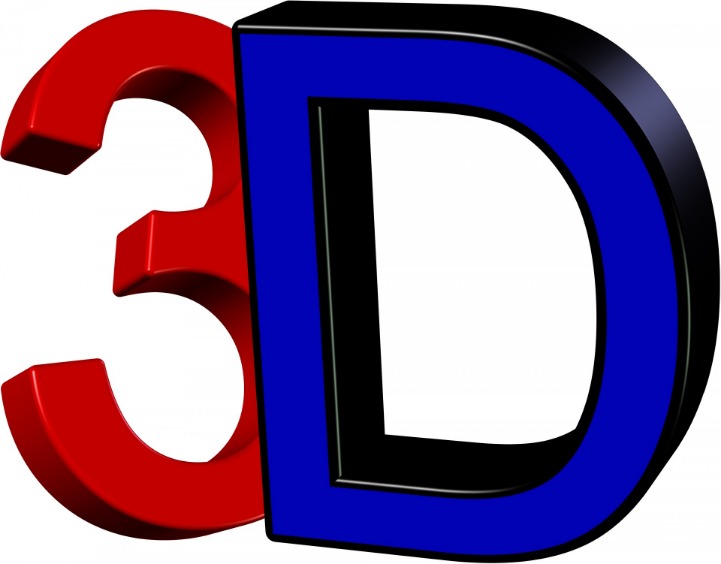
Technical Limitations
In the field of 3D graphic design, several technical limitations and challenges must be addressed to advance the medium. One primary challenge is the high computational power required for rendering complex models and scenes, which can hinder real-time interactivity and accessibility for users with limited hardware. Additionally, achieving realistic textures, lighting, and shading remains a demanding task, often requiring extensive manual input and expert knowledge. The integration of new technologies such as artificial intelligence and machine learning presents opportunities, but also introduces challenges related to accuracy, control, and consistency in design outputs. Future directions include developing more efficient rendering algorithms, enhancing user-friendly tools, and improving collaboration platforms that support seamless teamwork across different locations. Overcoming these limitations is essential to unlock the full potential of 3D graphic design, making it more versatile, efficient, and accessible for artists and designers worldwide.
Workflow and Collaboration
In the field of 3D graphic design, challenges primarily revolve around the increasing complexity of software tools, the demand for high-quality and realistic visuals, and the need for efficient workflows to meet tight deadlines. Artists often face steep learning curves with new technologies such as virtual reality integration and real-time rendering, requiring continuous skill development. Future directions point toward the integration of artificial intelligence to streamline creative processes, automate repetitive tasks, and enhance design accuracy. Additionally, advancements in hardware will enable more detailed and immersive designs, pushing the boundaries of creativity and realism.
Workflow in 3D graphic design is evolving to become more collaborative and integrated, with cloud-based tools and project management platforms facilitating real-time team cooperation. As projects grow in complexity, adopting standardized pipelines and asset management systems becomes essential to improve efficiency and consistency. Collaboration across disciplines, including animation, modeling, and texturing, is increasingly facilitated by shared platforms, enabling seamless communication and version control. Future trends suggest a move toward more modular workflows that leverage automation and artificial intelligence to reduce manual effort and accelerate project completion times.
Educational and Skill Development
Challenges and future directions in educational and skill development for 3D graphic design are essential to prepare professionals for the evolving industry landscape. As technology advances rapidly, staying updated with new tools, software, and techniques poses a significant challenge for learners and educators alike.
- Rapid technological advancements require continuous learning and adaptation to new software like Blender, Maya, or Cinema 4D.
- Balancing foundational principles with emerging trends such as real-time rendering and virtual reality integration.
- Addressing the skills gap by providing accessible training resources and mentorship programs.
- Fostering creativity while ensuring technical proficiency in 3D modeling, texturing, animation, and rendering.
- Incorporating interdisciplinary approaches, including aspects of traditional art, animation, and digital storytelling, into curricula.
- Encouraging collaborative projects that simulate real-world industry work environments.
- Future directions in education should focus on integrating virtual reality and augmented reality technologies to enhance immersive learning experiences.
- Developing modular, online courses to reach a global audience and accommodate diverse learning paces and styles.
- Promoting industry partnerships to provide students with hands-on project experience and exposure to current market demands.
- Emphasizing soft skills such as project management, communication, and teamwork alongside technical expertise.
- Encouraging research and innovation in sustainable and efficient 3D design workflows.
Emerging Opportunities in 3D Design
Challenges and future directions in 3D design within graphic design encompass a range of technical, creative, and ethical considerations. One significant challenge is the high computational power required for rendering complex 3D models, which can limit accessibility for smaller studios or individual designers. Additionally, mastering advanced software and tools necessitates ongoing learning and skill development, potentially creating barriers for newcomers. Ethical concerns also arise regarding the use of 3D technology in creating hyper-realistic images or deepfakes, raising questions about authenticity and misuse. Looking ahead, emerging opportunities include the integration of artificial intelligence and machine learning to automate and enhance design workflows, resulting in more efficient and innovative outputs. The growth of virtual reality and augmented reality opens new avenues for immersive graphic design experiences, transforming how audiences engage with visual content. Furthermore, advancements in 3D printing technology are enabling designers to translate digital creations into physical objects, bridging the gap between digital artistry and tangible products. As technology continues to evolve, the future of 3D graphic design promises increased creativity, accessibility, and new forms of visual storytelling.
